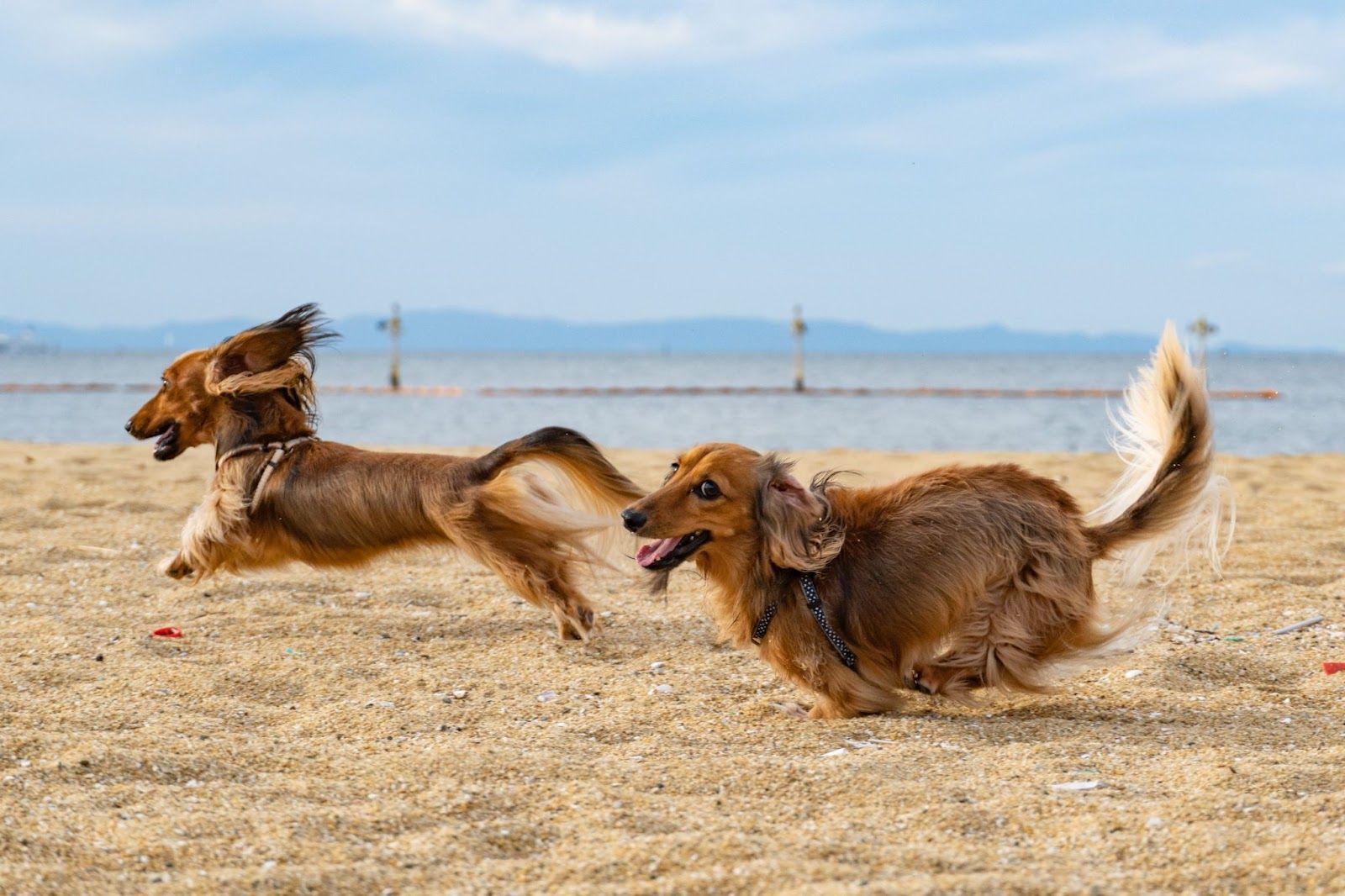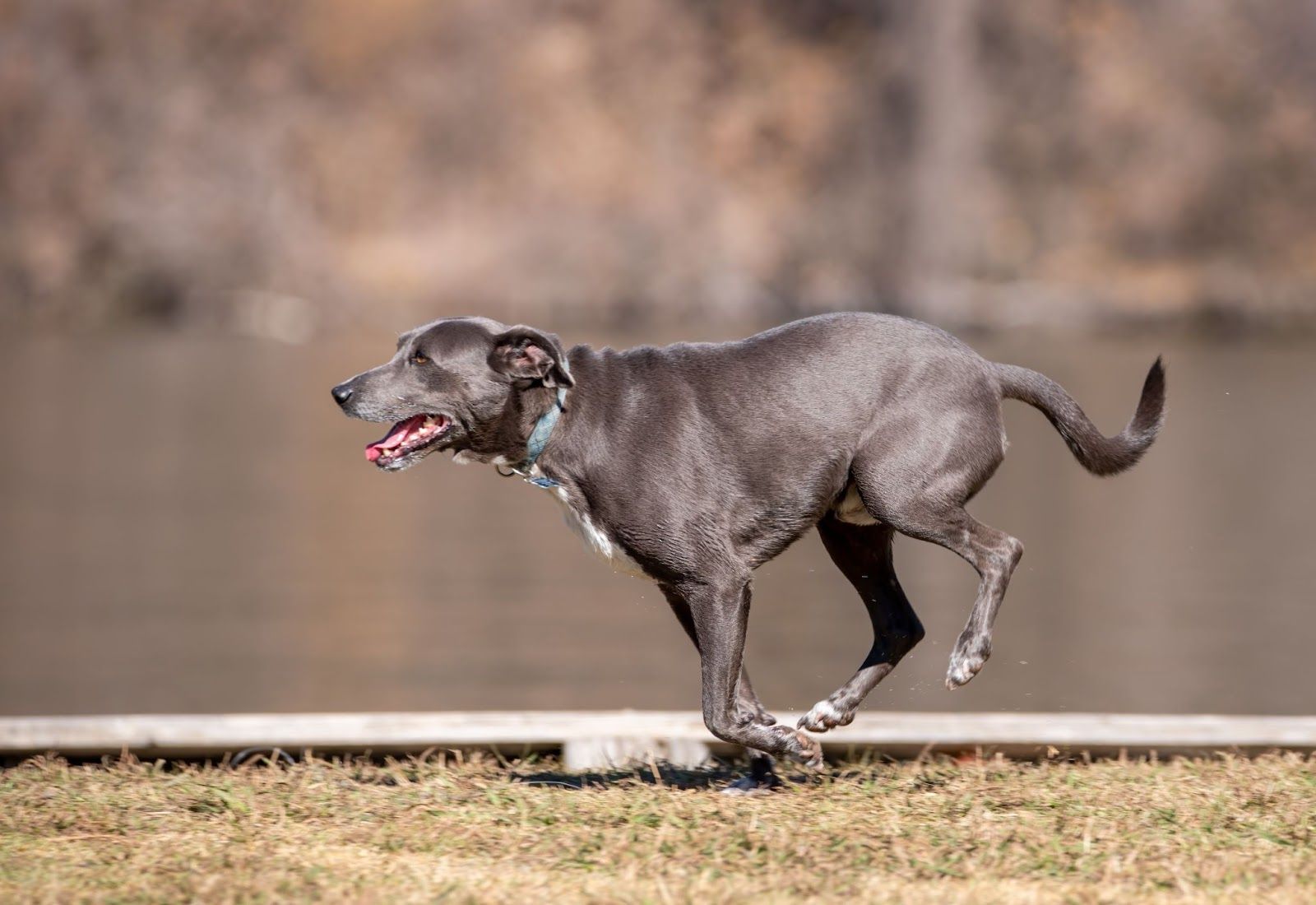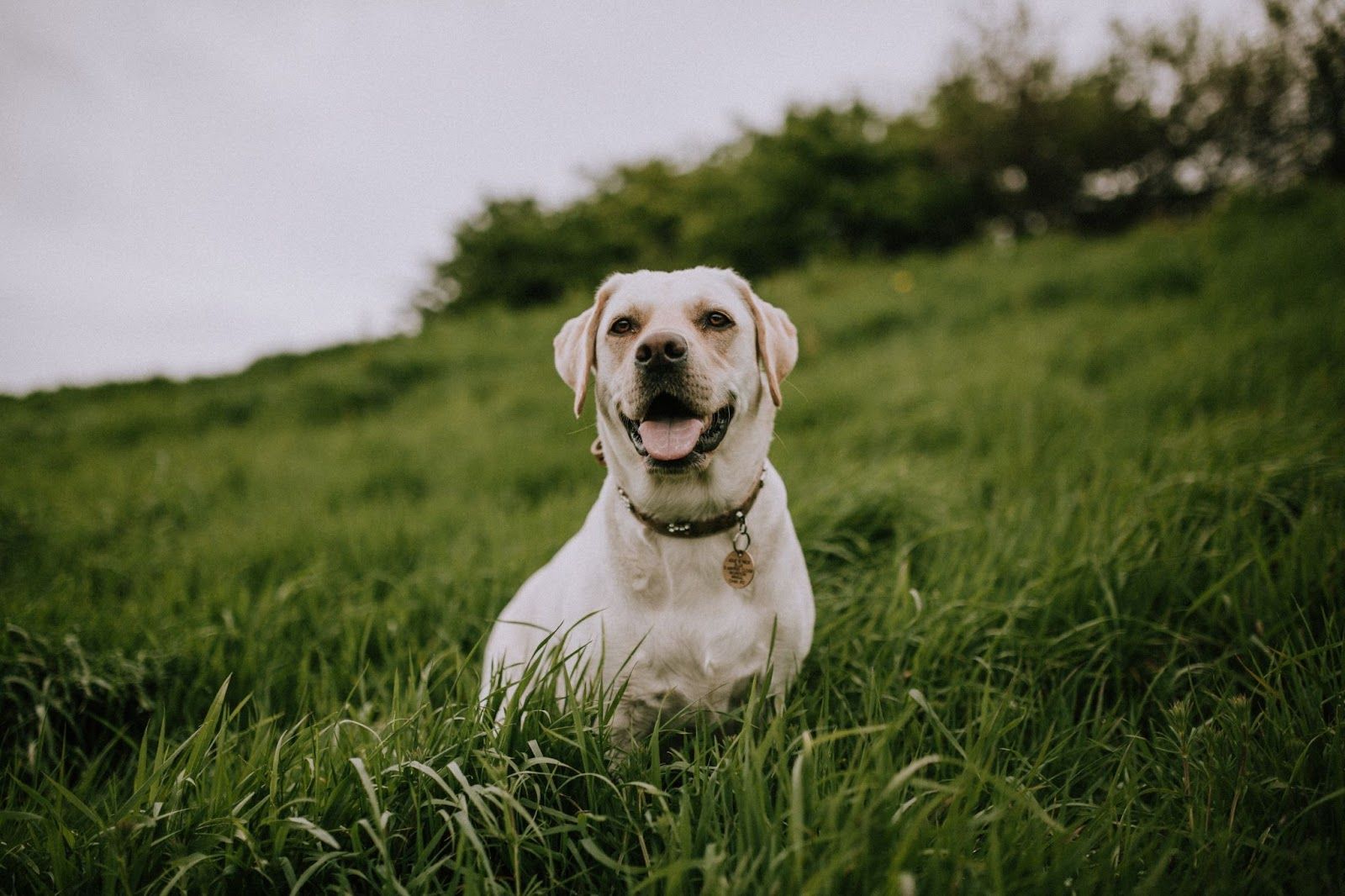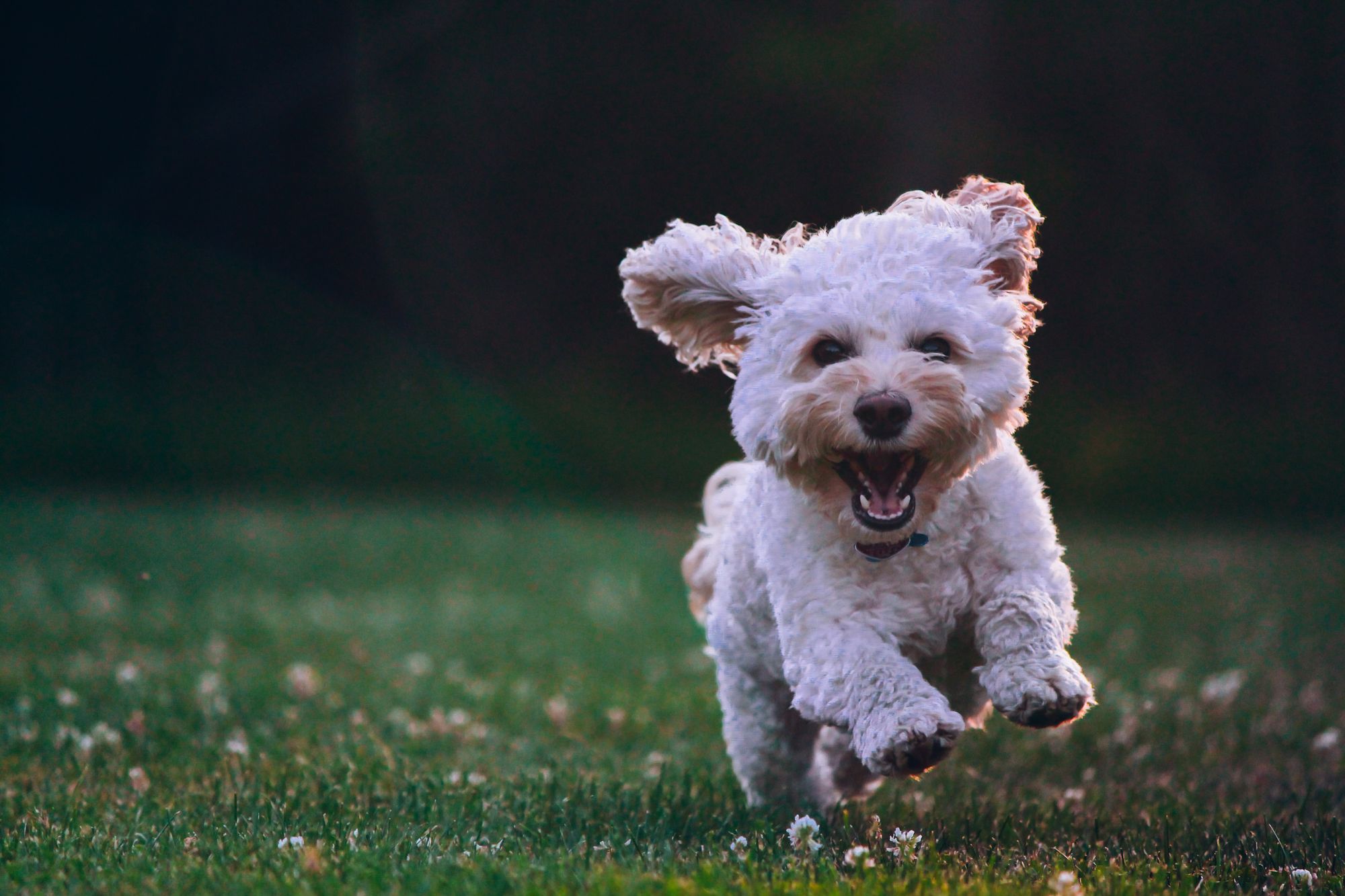It was one of those crisp autumn mornings. The sun had not yet fully awakened, and I decided to take Charlie, my golden retriever, for an early walk in the park. As soon as we arrived, I made a decision that I would soon regret—I unleashed Charlie. Before I knew it, he darted off, chasing a squirrel. Panic overtook me. "How do I catch my unleashed dog safely?" I thought. If only I'd had these pro tips back then.

Understanding Your Dog's Instincts
First and foremost, dogs are creatures of instinct. They see a squirrel, a cat, or another dog, and their primal instincts kick in. Chasing is in their DNA. Understanding this can help you avoid putting your dog in a situation where they might run off. But let’s say that ship has sailed and you're now in emergency dog commands mode. Breathe, and follow the next steps.
The DOs and DON'Ts
DO call your dog's name in a calm, upbeat tone. Sometimes, just the sound of your voice can snap them out of their chasing frenzy. But here's the kicker—avoid sounding frantic. Dogs are incredibly sensitive to our emotions, and if you panic, they might too.
DON'T chase after them. This may sound counterintuitive, but remember the dog's instinct to chase? If you run, they might think it's a game and run even faster. Instead, safe dog retrieval involves running in the opposite direction or dropping to the ground. This unusual behavior might pique their curiosity and draw them back to you.
Utilize Dog Recall Training
One of the most effective tools in the catching runaway dog toolkit is recall training. It's the art of teaching your dog to come back to you on command. This should be practiced frequently in safe, enclosed areas so that when the time comes, they'll respond even in distracting environments.
Distractions and Rewards
Always have a toy or treat on hand. In moments when your dog's attention is diverted, a squeaky toy or their favorite treat can lure them back. Remember, the goal is to make coming back to you more appealing than whatever caught their attention in the first place.
The Role of Technology
In today's age, technology can be a lifesaver—literally. Consider investing in a GPS tracker for your dog. It might seem overboard, but in situations where they get lost, a tracker can guide you directly to them. Think of it as your digital leash, always keeping tabs on your pet.
Reacting to Unleashed Dog Behavior
Let's circle back to our story. With my heart in my throat, I remembered a trick from one of our dog recall training sessions. I knelt down, looking as interesting and non-threatening as possible, and called out Charlie’s name in the playful tone we used during playtime. Sure enough, curiosity got the better of him. That bushy tail wagged as he trotted over, probably wondering what fun game we were about to play.
Always reward their return, no matter how stressed or upset you are. Dogs live in the moment. Punishing them when they come back might discourage them from returning next time. So even if you’re trembling with fear or frustration, give them a treat and lots of praise.
The Value of Consistent Training
When we talk about safely catching an unleashed dog, it isn't just about that one emergency moment. It's about the consistent training and bonding activities you engage in every day. Establishing a strong bond with your dog doesn’t happen overnight. It’s the little moments, the everyday interactions that build trust and understanding between you two.
Building Trust Through Positive Reinforcement
Always use positive reinforcement in your training sessions. Negative reinforcement might yield short-term results, but it can also lead to trust issues and increased anxiety in your dog. When they do something right, reward them. This encourages the behavior you want to see and reinforces their trust in you.
Think about it this way: if you were in a foreign country and didn't understand the language, would you prefer someone yelling at you or someone patiently guiding you with rewards for every word you got right?
Off-leash Training Zones
Before letting your dog roam free in an open area, consider starting in designated off-leash dog zones. These areas are typically fenced and offer a controlled environment for your dog to explore. It provides a great middle-ground for practicing recall and getting used to distractions without the immediate dangers of a fully open space.
Socialization is Key
Many dogs run off because they're not well-socialized. They might see another dog or human and either want to play or feel threatened. By regularly exposing your dog to various environments, people, and other animals in a controlled manner, you reduce the chances of them getting overly excited or scared and running off. Joining a local dog group or regularly visiting dog parks can be a great way to socialize your dog.
Understanding Their Breed
While all dogs have a chase instinct, certain breeds have a higher prey drive than others. For instance, breeds like Greyhounds, Siberian Huskies, and Terriers have a strong instinct to chase. Knowing this can help you anticipate your dog's behavior and take necessary precautions.
The Importance of Routine in Safety
After the exhilarating, heart-pounding chase with Charlie, I realized the significance of a stable routine in ensuring the safety of our furry companions. Regular routines don’t just make your life predictable; they play a pivotal role in a dog's understanding of the world around them.
Regular Walks and Exercise
Dogs are creatures of habit. Regular walks not only give them the physical exercise they crave but also a mental workout. Every new scent, every rustling leaf, offers them a myriad of sensory experiences. By keeping a consistent schedule, your dog will be less inclined to bolt out of sheer pent-up energy.
Mental Stimulation
Apart from physical exercise, dogs need their minds to be engaged. Think about toys like puzzle feeders or games like hide and seek. A mentally engaged dog is less likely to be reactive to its environment. Training sessions, even just 10-15 minutes a day, can also provide the necessary mental stimulation your dog craves. The added benefit? A well-trained dog responds better in unpredictable situations.
Safe Spaces for Your Dog
Every dog needs a safe space. Whether it's a cozy corner in your living room, a dedicated doggy room, or a comfy crate, dogs need a space they can retreat to. In stressful situations, or when they're feeling overwhelmed, this safe space can help calm them down, reducing the chances of erratic behavior like running away.
Regular Vet Visits
Often overlooked, regular check-ups with your vet play a crucial role in your dog's well-being. Apart from the standard health checks, vets can provide valuable insights into your dog’s behavior and offer advice on any concerning patterns. Sometimes, a dog might bolt or act out due to underlying health issues. Being proactive about their health ensures they're in their best shape, both physically and mentally.

Communication is More Than Words
Communication with your dog isn’t just about verbal cues. Dogs pick up a vast amount of information through body language, tone, and gestures. Understanding and harnessing these non-verbal cues can make a significant difference in ensuring safety.
Gestures and Signals
- Hand Signals: These can often be more effective than verbal cues, especially in noisy environments. For instance, a raised hand can mean 'stop', while a beckoning motion can mean 'come'.
- Whistles: Some trainers use dog whistles to communicate with dogs over long distances. The sharp, distinct sound can be recognized even in a crowded park.
- Facial Expressions: Dogs are adept at reading our faces. A smile, a frown, or even widened eyes can convey a plethora of emotions to your canine friend.
Introducing Safety Gear
Safety isn’t just about training; it’s also about being equipped with the right gear.
- Reflective Collars and Harnesses: Ideal for nighttime or low-light situations, they ensure your dog is visible to others, including motorists.
- Safety Lights: Attachable to collars or harnesses, these small LED lights can be a beacon in the dark.
- Long Training Leads: Before going completely off-leash, these long lines can give your dog a sense of freedom while ensuring you have control.
The Importance of Identification
A dog on the run without identification can be a recipe for disaster.
- Microchipping: A permanent method of identification. If someone finds your dog, a quick scan can provide them with all the necessary details to contact you.
- ID Tags: Ensure they have up-to-date information, including your contact number.
- Tattoos: Some owners opt for a small, unique identification tattoo on their dog, usually inside the ear or on the inner thigh.
Building a Community: The Power of Networking
Dogs are social creatures, and so are we. Being part of a community can act as a safety net in uncertain situations.
Local Dog Groups
- Joining a group helps in socializing your dog and provides a network of fellow dog owners who can assist if your dog goes missing.
Social Media
- Many towns and cities have dedicated Facebook groups or online forums where lost dogs are posted. Being a part of such communities ensures you have a wider net to cast if your dog gets lost.
Stay Updated with Local Events
- Being aware of events like fireworks, marathons, or parades can help you anticipate situations that might spook your dog.

The Role of Diet and Behavior
A well-balanced diet isn't just about keeping your dog healthy; it's also about managing their behavior. The food we give our dogs can impact their energy levels, mood, and overall temperament.
Deciphering Dog Food Labels
- Natural Ingredients: Foods without excessive fillers and artificial additives can help maintain stable energy levels in dogs, preventing erratic behavior.
- Proteins: Ensure a high-quality source of protein is listed as the first ingredient. This aids in muscle growth and keeps the dog satiated.
- Omega Fatty Acids: These support brain health, which is crucial for training and behavior management.
Treats as a Tool, Not Just a Reward
- High-Value Treats: These are treats that your dog absolutely loves. Reserve these for training sessions, especially for crucial commands like recall.
- Nutritional Balance: Ensure treats don’t exceed 10% of your dog’s daily calorie intake. An overweight dog can have health issues that can indirectly influence their behavior.
The Human Factor: Educating Ourselves
As dog owners, continuous learning is vital. Dogs evolve, situations change, and new challenges arise.
Enroll in Training Classes
- Even if you've had dogs before, each dog is unique. Training classes can offer insights tailored to your specific breed and individual dog's personality.
Attend Workshops and Seminars
- Workshops on dog behavior, safety protocols, and new training techniques can be invaluable.
Read Widely
- There's a wealth of information available in books, journals, and online. Staying updated on canine research can help preemptively address issues before they become major concerns.
Bonding Activities: Strengthening the Connection
A strong bond with your dog isn't just about love; it's also about trust. Engaging in activities together can solidify this bond.
Adventure Together
- Hiking: Exploring trails with your dog allows both of you to experience new environments, which can be both stimulating and educational.
- Camping: A night under the stars can be a unique bonding experience. Just ensure you have all the necessary gear to keep your dog safe.
Play Interactive Games
- Tug-of-War: With the right rules, this can be a fun and mentally stimulating game.
- Fetch: Reinforces the retrieve instinct in a controlled environment.
- Hide and Seek: A fun way to practice recall and engage your dog's tracking instincts.
Conclusion:
In ensuring the safety of our unleashed dogs, we must embrace a holistic approach. From consistent training, understanding non-verbal cues, and investing in safety gear to providing a balanced diet, engaging in bonding activities, and continuously educating ourselves – every aspect plays a crucial role. It's about building a foundation of trust, predictability, and understanding with our canine companions. By being proactive, tapping into community resources, and fostering strong connections, we not only enhance our dogs' safety but also enrich the shared journey. Amidst the unpredictability, with knowledge and preparedness, we can confidently navigate any challenges that come our way.
Frequently Asked Questions (FAQs)
- What are the best methods for catching an unleashed dog?
- Employing a calm approach, using familiar commands, leveraging treats or toys, and avoiding direct eye contact can be effective. Consistent training and establishing a strong bond will also make it easier to catch an unleashed dog.
- How can I improve my dog's recall skills?
- Regular training sessions using positive reinforcement, high-value treats, and practicing in controlled environments like fenced-off dog zones can significantly enhance your dog's recall response.
- Why is my dog running away from me?
- Dogs might run due to excitement, fear, curiosity, or a strong prey drive. Understanding your dog's breed, temperament, and any potential triggers can help address this behavior.
- How do I ensure my dog's safety when off-leash?
- Equip your dog with reflective collars, safety lights, and proper identification like microchips and ID tags. Training them consistently, socializing them, and maintaining a balanced diet can also contribute to their safety.
- Are there tools or accessories to help keep my dog safe off-leash?
- Yes, tools like long training leads, reflective harnesses, safety lights, and GPS dog collars can be instrumental in ensuring your dog's safety when off-leash.
- How can diet influence my dog's behavior when off-leash?
- A balanced diet can regulate a dog's energy levels and mood. Foods without excessive fillers and artificial additives, rich in proteins and omega fatty acids, support brain health and overall temperament.
- How can I strengthen my bond with my dog to ensure they listen to me off-leash?
- Engaging in regular training sessions, participating in bonding activities like hiking or playing interactive games, and providing mental stimulation can significantly strengthen your bond with your dog.
- What role does the community play in ensuring the safety of unleashed dogs?
- Being part of local dog groups, and social media communities, and staying updated with local events creates a supportive network, which can be crucial if your dog goes missing or if you need advice and resources.
- Can regular vet visits impact my dog's behavior when off-leash?
- Absolutely. Regular vet checks can help identify underlying health issues that might influence your dog's behavior. Vets can also provide insights and advice on behavior management.
- Why is positive reinforcement vital in training for off-leash safety?
- Positive reinforcement builds trust, reduces anxiety, and encourages desired behavior in dogs. It ensures they associate commands with positive outcomes, making them more likely to obey even in distracting environments.





